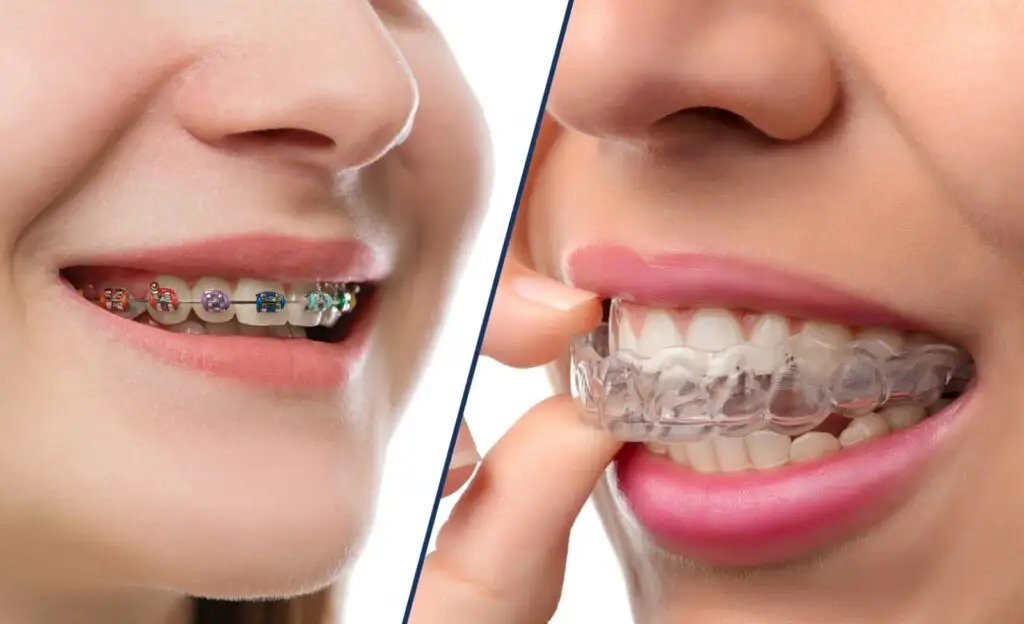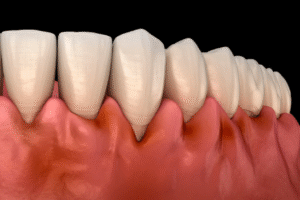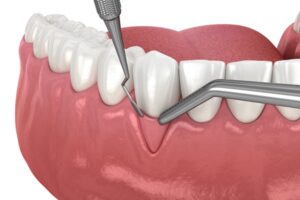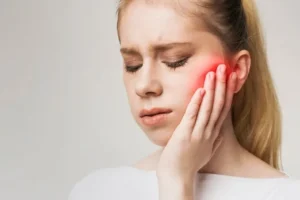Invisalign or Braces Gandhinagar? Which one is the best option for you?

Invisalign or Braces Gandhinagar? Which one is the best option for you?
The journey to a perfect smile is exciting, but it often starts with a major decision: should you choose traditional braces or modern clear aligners? For residents seeking orthodontic care, the question of Invisalign vs braces Gandhinagar is more relevant than ever, with both options offering incredible results.
At our dental clinic, we understand this dilemma deeply. It’s not just about aesthetics; it’s about treatment effectiveness, lifestyle compatibility, cost, and overall comfort. While traditional braces have been the gold standard for decades, Invisalign’s clear aligners have revolutionized the industry, offering a subtle, convenient alternative.
This comprehensive guide breaks down the core differences, helping you understand the pros and cons of each, and ultimately answering the question: braces or invisalign which is better for your specific needs in Gandhinagar?
Traditional Braces: The Tried-and-True Solution
When people think of orthodontics, they typically picture traditional metal braces. These consist of high-grade stainless steel brackets attached to the front of each tooth, connected by a thin, flexible archwire. Tiny elastics (ligatures) hold the wire in place, and it is the periodic tightening of this wire that gently, yet powerfully, moves the teeth into alignment.
Why Braces Remain the Gold Standard
For specific and complex cases, traditional braces are still considered the best braces for straight teeth. Their fixed nature provides maximum control over individual tooth movement, making them highly effective for severe orthodontic issues, including:
- Significant Overcrowding: Cases where teeth are severely bunched together and require complex rotations or extractions.
- Major Bite Corrections: Severe overbites (Class II malocclusion), underbites (Class III malocclusion), and crossbites.
- Consistency: Because braces are fixed to your teeth, compliance is guaranteed. They work 24/7, which is a major advantage for patients, especially younger teens, who might struggle with the responsibility of wearing aligners.
Pros and Cons of Traditional Braces
| Feature | Pros (The Advantages) | Cons (The Drawbacks) |
| Effectiveness | Excellent for complex rotations and bite issues. Highly reliable. | Can require longer treatment times for simple cases. |
| Durability | Made of sturdy metal; highly durable and less prone to breaking than plastic. | Brackets can sometimes irritate the cheeks and lips initially. |
| Appearance | Metal brackets are highly visible. | Appearance is the main concern for adults and professionals. |
| Lifestyle | No risk of losing the appliance. Compliance is automatic. | Requires significant dietary restrictions (avoiding hard, sticky foods). |
| Hygiene | N/A | Cleaning requires specialized tools (floss threaders, interdental brushes). |
Invisalign: The Modern, Discreet Choice
Invisalign utilizes a series of custom-made, clear plastic trays, or clear aligners for straight teeth, which fit snugly over the dental arches. Unlike fixed braces, these aligners are removable. Each set of aligners is worn for 1 to 2 weeks (depending on the doctor’s recommendation) before moving to the next set in the series, slowly guiding the teeth toward their final, desired position.
The Clear Advantage
The primary appeal of Invisalign lies in its almost invisible appearance. This makes the Invisalign vs traditional braces comparison a simple win for the clear aligners in the realm of aesthetics. Adults and professionals can undergo treatment without the self-consciousness associated with metal hardware.
Benefits of Clear Aligners
- Aesthetics: The most noticeable benefit—they are virtually unnoticeable during daily interaction.
- Comfort: The smooth plastic minimizes the risk of mouth abrasions that metal wires and brackets can cause.
- Freedom to Eat: Because you remove the aligners for every meal, there are absolutely no dietary restrictions. You can enjoy everything from crunchy snacks to sticky toffees without worry.
- Improved Hygiene: Simply remove the aligners to brush and floss your teeth normally. This drastically reduces the risk of plaque buildup and staining compared to fixed braces.
The Requirement for Success: Compliance
The effectiveness of Invisalign hinges entirely on patient compliance. For the treatment to work correctly, the aligners must be worn for 20 to 22 hours per day. Failure to meet this requirement can slow down progress, require the need for refinements, or even result in the need to switch to traditional braces.
The Critical Comparison: Cost of Braces vs Invisalign
For many Gandhinagar residents considering orthodontic treatment, the financial commitment is a major factor. When comparing the cost of braces vs Invisalign, it is important to understand that there is no fixed price tag. The final cost depends on several variables specific to your unique treatment plan.
Factors Influencing the Final Cost
- Case Severity and Duration: The more complex your malocclusion (bite issue) and the longer your treatment duration, the higher the cost will be for either option. Simple cases might require 6-12 months of treatment, while severe cases can span 24 months or more.
- Orthodontist Experience: Highly experienced orthodontists or certified Invisalign providers may have higher fees, reflecting their expertise and success rates.
- Appliance Type:
- Traditional Metal Braces: Generally the most economical option.
- Ceramic (Clear) Braces: Typically cost slightly more than metal braces due to the specialized material.
- Invisalign: Often falls at the higher end of the cost spectrum, primarily due to the advanced technology, materials, and customization required to fabricate the multiple sets of aligners.
- Additional Procedures: Some patients may require pre-orthodontic procedures (like simple tooth extractions or fillings) or post-orthodontic retainers, which will add to the overall investment.
In a general sense, while traditional braces often represent the lowest starting price point, the difference in the final cost of braces vs Invisalign for comparable cases is often minimal, especially when considering payment plans and financing options. At our clinic, we provide a detailed, itemized quote after your initial assessment, ensuring complete transparency in the cost of braces vs Invisalign for your specific needs.
Daily Life and Maintenance: Which is Easier?
Orthodontic treatment is a long-term commitment, and the impact on your day-to-day life is a crucial deciding factor.
Oral Hygiene and Cleaning
| Aspect | Traditional Braces | Invisalign Clear Aligners |
| Brushing | Requires careful brushing around wires and brackets. Often necessitates special brushes to prevent staining (white squares left when braces come off). | Normal, unrestricted brushing and flossing routine. |
| Flossing | Extremely challenging; requires special tools like floss threaders or Platypus flossers to maneuver under the archwire. | Completely unrestricted; remove the aligners and floss normally. |
| Appliance Care | Brackets require little care other than consistent cleaning. | Aligners must be cleaned daily using special crystals or a brush to prevent odor and discoloration. |
Dietary Restrictions
This is where the distinction between Invisalign vs traditional braces becomes the clearest lifestyle choice.
- Braces: Strict restrictions are necessary to prevent breakage. You must avoid hard foods (nuts, popcorn, hard candies), sticky foods (caramels, chewing gum), and excessively crunchy or tough foods (hard crusty bread, biting into whole apples). Breakages lead to emergency visits and delays in treatment.
- Invisalign: Zero food restrictions. Since the aligners are removed for eating, you can enjoy all your favorite foods. This is a massive benefit for food lovers and those with busy social schedules.
How to Choose: Braces or Invisalign Which is Better for Your Smile?
There is no universal “better” option; there is only the best option for your clinical needs, lifestyle, and financial situation. Our goal at the Gandhinagar clinic is to guide you to the choice that offers you the most successful and comfortable outcome.
When Traditional Braces are Recommended
If your clinical diagnosis in Gandhinagar falls into any of the following categories, traditional braces may be the most efficient and predictable choice:
- Complex Malocclusion: Severe rotations, large gaps, or teeth positioned far out of the arch.
- Severe Jaw/Bite Discrepancies: Cases requiring significant structural movement that needs the constant, fixed pressure of brackets and wires.
- Non-Compliance Concerns: If you are treating a younger family member or you know you will struggle to wear the clear aligners for straight teeth for the required 22 hours per day.
- Budget Priority: If maximizing effectiveness while minimizing initial cost of braces vs Invisalign is the primary concern.
When Invisalign is the Ideal Choice
Invisalign is an exceptional option for a vast majority of patients seeking Invisalign vs braces Gandhinagar treatment, particularly when these factors are important:
- Aesthetics and Professional Life: For adults or high-schoolers who prioritize a virtually invisible treatment experience.
- Lifestyle Convenience: Patients who travel frequently or do not want dietary restrictions.
- Mild to Moderate Issues: Perfect for correcting slight overcrowding, small gaps, and minor bite issues.
- Superior Oral Health: Patients highly concerned about maintaining perfect oral hygiene throughout treatment.
The only way to definitively answer braces or invisalign which is better for you is through a personalized, detailed consultation right here in Gandhinagar. We use advanced imaging and diagnostic tools to show you the predicted outcome of both options.
Real-World Case Studies: Invisalign vs Braces Gandhinagar
To illustrate the effectiveness of both options, consider two hypothetical patients from the Gandhinagar area:
Case Study 1: The Young Professional (Invisalign)
- Patient Profile: 30-year-old software engineer living in Gandhinagar, often attending client meetings.
- Issue: Mild crowding on the lower arch and a small gap between the upper front teeth.
- Priority: Discreet treatment and minimal impact on diet and work life.
- Outcome: Invisalign was chosen. The patient appreciated the freedom to remove the aligners for networking events and easy maintenance. Treatment was successful in 15 months, resulting in perfectly aligned teeth using clear aligners for straight teeth.
Case Study 2: The Complex Teen Case (Traditional Braces)
- Patient Profile: 14-year-old student with severe upper jaw protrusion (overbite) and significant dental rotation.
- Issue: Severe Class II malocclusion requiring complex, fixed mechanics.
- Priority: Clinical effectiveness and high predictability for major bite correction.
- Outcome: Traditional braces were necessary to achieve the necessary fixed movement and anchorage. Despite the visibility, the result was a dramatic correction of the bite and a stable, beautiful smile, confirming that for severe issues, they remain the best braces for straight teeth.
Frequently Asked Questions (FAQs)
Q: Do clear aligners hurt more than braces?
A: Generally, no. Both appliances cause temporary discomfort or pressure for a few days after adjustments (tightening wires or switching to a new aligner tray). However, braces can cause physical sores or cuts from the metal brackets rubbing against the inside of the cheeks, which aligners typically do not.
Q: What is the fastest way to get straight teeth?
A: The fastest method is the one that is most effective for your specific case. For mild cases, Invisalign often produces results quickly. For complex cases, traditional braces are usually the quickest route because they can apply constant, focused pressure in ways aligners cannot. Speed is always secondary to stability and permanence of the result.
Q: How much time must I dedicate to my Invisalign aligners each day?
A: You must wear your aligners for a minimum of 20 to 22 hours per day. They should only be removed for eating, drinking anything other than water, and for brushing and flossing. Failure to meet this requirement is the number one cause of treatment delay.
Conclusion: Start Your Smile Journey Today
Choosing between Invisalign vs braces is a highly personalized decision. Both treatments are revolutionary in their own right and offer fantastic final results, but they differ significantly in terms of lifestyle, maintenance, and clinical application.
The most crucial step you can take now is to consult with an experienced orthodontist. We specialize in evaluating your dental structure, understanding your lifestyle goals, and providing a definitive recommendation. We will compare the expected outcome and the true cost of braces vs Invisalign based on your teeth, ensuring you make an informed choice.
Don’t wait any longer to achieve the straight, beautiful smile you deserve.
Ready to find out if clear aligners or traditional braces are your best option?
Call us today to book your orthodontic consultation at our Gandhinagar clinic!










